|
Coffee break
Snippets from around the
world.
All sources are duly credited
South Asians in News
|
The 2004 Ramon
Magsaysay Award Winners
Source: www.rma.org
|
|
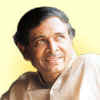
Abdullah Abu Sayeed
(Bangladesh)
The 2004
Ramon Magsaysay Award for Journalism, Literature, and Creative Communication
Arts
Sayeed was born
in 1939 in Calcutta, where his father was a teacher and a well-known
playwright. After Partition, he attended university in newly independent
East Pakistan, which became Bangladesh in 1971. As a young man, Sayeed wrote
poetry and fiction and led a vibrant literary movement of the 1960s as
editor of the magazine Kanthashar; he drifted into the new medium of
television and hosted a succession of popular shows. All the while, for some
twenty-five years, he taught literature at Dhaka College.
Observing the
decline of intellectual life in Bangladeshi society, in 1978 Sayeed founded
the World Literature Centre to restore interest in reading among the youth
and, he said, to "enlighten human beings." Under Sayeed’s
guidance, twenty-five university students began reading and discussing great
works of literature in an Enrichment Program that soon grew to include high
school and college students. Each group in Sayeed’s program worked its way
through a twenty-two week course of some seventy books drawn from Bengali
and world literature — books by Rabindranath Tagore and Shakespeare, Kazi
Nazrul Islam and Leo Tolstoy, among others. They met regularly in guided
"reading circles" and won prizes for completing their assignments
promptly.
With a grant
from the ministry of education, Sayeed expanded the Enrichment Program to
branches in Dhaka and eventually throughout Bangladesh. Today there are 500
branches in 54 districts and the program has hundreds of thousands of
graduates. In the meantime, Sayeed developed the Centre itself as a library,
serving hundreds of readers a day, and also as a publishing house. Sales of
its 225 volumes of verse and prose and translations provide financial
support for the Centre’s activities.
Responding to
the woeful lack of public lending libraries in Bangladesh, in 1998 Sayeed
launched a nationwide library program. Funded largely by the Norwegian
government, its well-stocked bookmobiles today make stops at 250 locations
in four cities throughout the country. Nearly twenty-thousand readers have
become bookmobile members.
Versatile and
charismatic, Sayeed devotes himself utterly to the Centre and its programs
and, these days, also to urgent environmental concerns. His work is
constantly growing. Today the Centre offers programs in the arts and
possesses a film and music library. Sayeed manages it all with thirty-five
staff members and more than four thousand volunteers, including many of his
former students. He dreams of building an ever larger network of libraries,
bookmobiles, and reading circles throughout Bangladesh; and of publishing
250 new volumes of Bengal’s great literature; and of erecting a new
twelve-story cultural complex in Dhaka. But most of all Sayeed dreams of a
new generation of enlightened Bangladeshi citizens whose values have been
enriched by reading. His country’s future leaders will emerge from such a
group, he says hopefully. "We see our students everywhere."
|
|
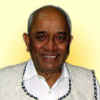 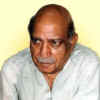
L-R: Admiral
(Retd.) Laxminarayan Ramdas (India);
Ibn Abdur Rehman (Pakistan)
The
2004 Ramon Magsaysay Award for Peace and International Understanding
As
leaders of the Pakistan India People’s Forum for Peace and Democracy,
they are building popular support for peace on both sides of the
border.Both men guided the organization until 2003.
The
Forum’s chief weapon was dialogue. In a series of joint conventions
beginning in 1995, it drew hundreds of Indians and Pakistanis together to
promote demilitarization, denuclearization, and peace, and to publish
resolutions insisting upon mutual arms reductions and troop pullbacks; an
end to cross-border provocations; and a "peaceful democratic
solution" in Kashmir. Meeting alternately in Pakistan and India, the
conventions have sustained this dialogue for ten years as the Forum’s
base has grown to embrace a web of environmental, human rights, trade
union, and women’s rights activists as well as concerned citizens from
the academe, industry, and the professions. During the same years, the
Forum organized people-to-people delegations of lawmakers, diplomats,
soldiers, artists, women, and students to open friendly talk channels
between Indians and Pakistanis and to counteract propaganda in each
country stigmatizing the other. It also campaigned for the liberalization
of travel between the two countries and for the revision of hate-filled
school textbooks. At another level, Forum leaders such as Rehman and
Ramdas worked behind the scenes with national leaders and opinion makers
to promote the peace agenda.
|
| |
|
Vijay Singh becomes only the third
player to win the Buick Open twice.

What else has he done?
He changed his putter, going back to a standard
putter after using a long one for over two years.
He has finished 1st on the PGA TOUR 4 times in
2004.
He ranks 10th in Driving Distance on the PGA TOUR.
|
|
Daniel Chopra gets his best finish
on the PGA TOUR in 2004 - T8th at the Buick Open.

He ranks T32nd in Driving Distance on the PGA TOUR.
|
|
Anish Kapoor to create a sculpture
at Ground Zero
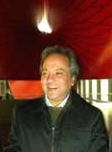
India born
sculptor Anish Kapoor has been chosen to create an important work that will
be the centrepiece of the proposed British Memorial Garden, close to Ground
Zero in New York. Called Unity, Kapoor's
sculpture will be carved from black granite and the block – about six
metres high by 2.5m wide by 1.5m deep - would have a tall vertical chamber
cut into it. The plan has been given approval by the New York Art Commission
that is in charge of works of art proposed for open spaces in the city.
Anish Kapoor is one of the most
influential sculptors of his generation. Born in Bombay, he has lived and
worked in London since the early 70's. His work has been exhibited worldwide
and is held in numerous private and public collections, including the Tate
Gallery, the Museum of Modern Art in New York, the Reina Sofia in Madrid and
Stedlijk Museum in Amsterdam.
Source: www.wdr.de
|
Environmental snippets
|
Orange Cauliflower Developed at Cornell's
Experiment Station
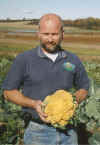
Rick Pedersen grew orange
cauliflower on the Pedersen Farm in Seneca Castle, NY, last fall. Consumer
interest was good, he said. People like the color and the flavor.
Cornell University crucifer breeder
Michael Dickson has transformed cauliflower from broccoli's pale cousin into
a new orange variety that started appearing in supermarkets and farmers'
markets last fall.
The florets of the new cauliflower
look like those of its white cousin, but are orange. More importantly, the
vitamin content of orange cauliflower is higher because it contains 320
micrograms of beta-carotene per 100 grams, or approximately 25 times more
vitamin A than white cauliflower.
It has been a 30-year journey from the
farm to the fork for the orange cauliflower, which was first found in the
Bradford Marsh in Canada in 1970. The mutant was smaller and less tasty than
a white cauliflower, but the orange color was alluring.
Source:New
York State Agricultural Experiment Station
|
|
Koalas – in serious trouble

Photo source: MSNBC
Australian Koalas face extinction as
rapid urbanization along the eastern seaboard destroys their fragile
habitat, the Australian Koala Foundation is warning.
A survey of 1,000 koala habitats found
30 percent no longer had a koala in them and 60 percent had suffered
widespread destruction.
Koalas are protected by law but the
eucalyptus trees they call home and which provide their only source of food
are not.
There are about 100,000 koalas in
Australia, down from an estimated seven to 10 million at the time of white
settlement in 1788. In the 1920s, three million koalas were shot for their
fur.
With 80 percent of Australia’s east
coast temperate forests destroyed and continued rapid urbanization, koalas
along the eastern seaboard could be extinct in 15 years.
Source:
MSNBC News
|
Disclaimer |







